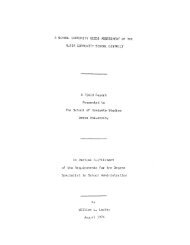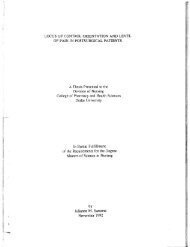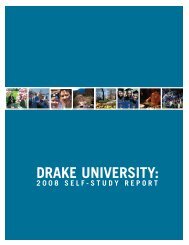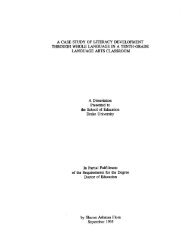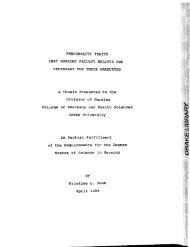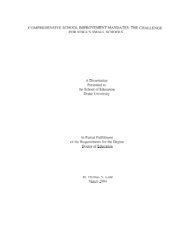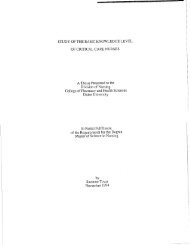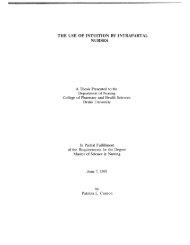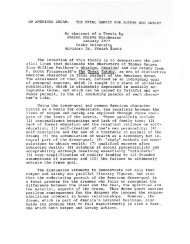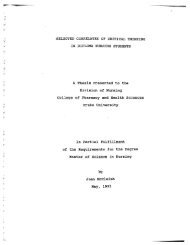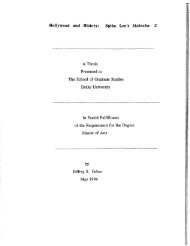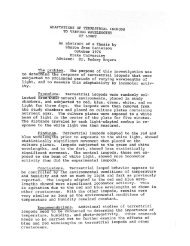LEADERSHIP CHARACTERISTICS OF ... - Drake University
LEADERSHIP CHARACTERISTICS OF ... - Drake University
LEADERSHIP CHARACTERISTICS OF ... - Drake University
You also want an ePaper? Increase the reach of your titles
YUMPU automatically turns print PDFs into web optimized ePapers that Google loves.
Table I 8<br />
Subordinate Measure of Gender Relative to Leadership Style and<br />
Outcomes<br />
Gender N Mean Std. Std. Error<br />
Deviati Mean df Chi- Sig.<br />
on square<br />
Transformational 14<br />
Leadership female 3.4393 .31736 .04956 1 5.31 9 .021<br />
male 44 3.1521 .65149 ,05041<br />
Transactional<br />
Leadership female 14 2.4652 .59603 ,09308 1 1.409 ,235<br />
male 44 2.3212 56534 .04375<br />
Passive-Avoidant<br />
Leadership female 14 .5893 .48509 -07576 I 8.246 .004<br />
male 44 .9899 .79976 .06189<br />
Hypothesis 4: A transforma fional leadership style positively relates to<br />
recent hours of leadership training.<br />
A Pearson's correlation coefficient was calculated examining the<br />
relationship between leadership styles as rated by CEO associates and<br />
the CEOs' self-reporting of leadership training hours in the preceding three<br />
years. Weak and insignificant correlations were found,<br />
(r = .165, -.016, -. 1 88, ~ ~005,) for transformational, transactional, and<br />
passive-avoidant leadership respectively (Table 1 9).<br />
A similar correlation was calculated between CEOs' self-reported<br />
training and their self-reported leadership style (Table 20). While weak<br />
correlations that were not significant were found for transactional<br />
leadership (r = .077, pz.05) and passive-avoidant leadership



